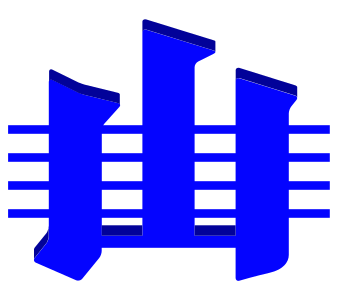GSSP for Hettangian Stage
Definition:
the base of the Jurassic System Lower Jurassic Epoch and Hettangian Stage is situated at the Kuhjoch pass, Karwendel Mountains, Northern Calcareous Alps, Austria (47°29'02"N/11°31'50"E). The Triassic-Jurassic (T-J) boundary is exposed at Kuhjoch West and at Kuhjoch East, and corresponds to the first occurrence (FO) of the ammonite Psiloceras spelae tirolicum. The “Golden Spike” was fixed at Kuhjoch East. The section displays a high and continuous sedimentation rate with a constant facies trend across the boundary level. Other bio-events include the FO of the aragonitic foraminifer Praegubkinella turgescens, and of diverse ostracod species 1.0-3.40 cm below the FO of P. spelae and 3.2 m below P. spelae occurs the continental palynomorph Cerebropollenites thiergartii. Because of the lack of other terrestrial microfloral events this is yet the FO event closest to the FO of P. spelae and allows a correlation with nonmarine sediments. The δ13Corg record shows a strong initial negative excursion at the boundary between the Kössen and Kendlbach formations, 5.8 m (Kuhjoch W) below the T-J boundary, a shift to more positive δ13Corg in the Schattwald Beds and a gradual decline to more negative values at the transition of the Schattwald Beds to the proximate Tiefengraben Mb. The stratotype point lies within a zone of smaller negative and positive δ13Corg peaks, which is superimposed on a longer lasting main negative shift. According to recent investigations, the radiometric age of the T-J boundary is about 201.3 Ma.Location:
The GSSP for the the base of the Jurassic System, Lower Jurassic Epoch and Hettangian Stage is situated at the Kuhjoch pass, Karwendel Mountains, Northern Calcareous Alps, Austria (47°29'02"N/11°31'50"E).
Grey to brownish clay-rich marls (up to 13 cm thick) with concretions of pyrite and worm-shaped traces constitute the base of the Tiefengraben Member and are overlain by yellowish weathering, partly laminated marls (ca. 30 cm thick) passing into reddish, partly laminated, silty clays approximately 2 m thick. Grey intercalations characterize the transition to the overlying main part of the Tiefengraben Member, 19.5 m thick.Primary Markers:
First occurrence of the ammonite Psiloceras spelae tirolicum.
Secondary Markers:
Other bioevents include the FO of the aragonitic foraminifer Praegubkinella turgescens, and of diverse ostracod species 1.0-3.40 cm below the FO of P. spelae and 3.2 m below P. spelae occurs the continental palynomorph Cerebropollenites thiergartii.
